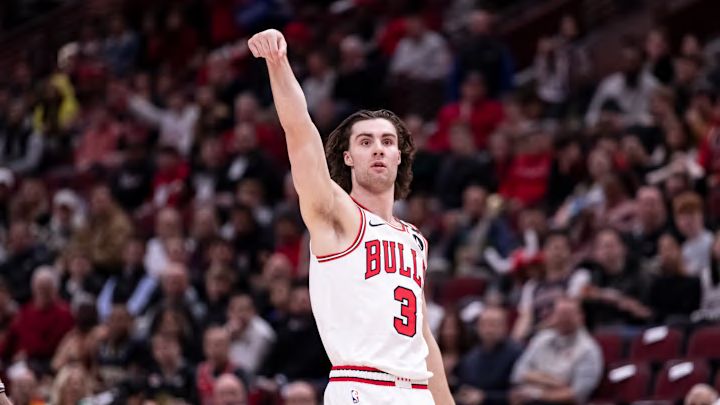Specialists rarely command nine-figure contracts. And when they do, they’re expected to transcend that elite skill. Take Minnesota Timberwolves center Rudy Gobert. He’s known almost exclusively as a defensive anchor—but dismissing that role would be a mistake. A four-time Defensive Player of the Year, Gobert has consistently lifted his teams to the top of the Western Conference’s defensive rankings.
Specialists are usually thought of as knockdown shooters, like Duncan Robinson or Malik Beasley, or elite perimeter defenders, like Davion Mitchell and Kris Dunn. You could also throw in rim protectors and energy guys, but the point remains the same. Among that group, Robinson has secured the richest deal, a three-year, $48 million contract.
Not all specialists fit the mold of shooter or defender. Consider Chicago Bulls floor general Josh Giddey, fresh off a four-year, $100 million deal. Yes, he’s a nightly triple-double threat. But for three and a half seasons, his only truly elite skill has been his passing. Giddey's rebounding could certainly be mentioned, especially given his position, but it’s rarely a skill teams are willing to invest heavily in on its own.
Josh Giddey's one-dimensional game had limited him in the past
Consequently, with passing as his standout skill, Giddey was often confined to an on-ball role. Yet his scoring, or lack thereof, prevented him from fully dominating as a primary ball handler. The 6-foot-8 guard had never been a confident or efficient shooter, nor a particularly creative scorer, that is, until after last season’s All-Star break.
Giddey’s post-All-Star break numbers have been widely noted. In 19 games following the All-Star game, he averaged a near triple-double, 21.2 points, 10.7 rebounds, and 9.3 assists. What stands out most, however, is his efficiency, which is remarkable for a player who’s consistently hung his hat on being a triple-double threat. He shot 50.0 percent from the field and 45.7 percent from three-point range.
Giddey’s post-All-Star break progression goes beyond improved efficiency. He became a much more effective driver, averaging 8.5 points per game on drives, up from just 3.6 earlier in the season. It’s a clear sign of his growth as an on-ball creator, not just for others, but for himself.
Nevertheless, being a $100 million player requires more than just effectiveness with the ball, especially for guards in today’s NBA. Before his breakout in the latter half of his first season in Chicago, Giddey’s inability to be a threat off the ball ultimately cut his time short in Oklahoma City. Playing alongside Shai Gilgeous-Alexander and Jalen Williams, Giddey wasn’t as effective off the ball—a skill that was essentially mandatory next to two All-Stars.
In Chicago, Giddey reclaimed his most comfortable role as an initiator, while also making strides as an off-ball threat. He shot a career-high 37.8 percent from three, with nearly 90 percent of his attempts coming off assisted looks.
However, Giddey’s improvement in catch-and-shoot efficiency is equally notable. He shot 35.3 percent from three before the All-Star break and 46.7 percent after. He’s no longer a questionable shooter, but a player defenses must account for even when the ball isn’t in his hands.
To fully justify his $100 million price tag, the Aussie must continue proving he’s a threat off the ball. While his passing remains his standout skill, it has also narrowed his game over the years—a limitation that doesn’t align with nine-figure expectations. Players who can impact the game both with and without the ball are the ones truly worth that kind of investment, and that’s an adjustment Giddey must keep developing.
